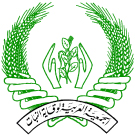Citrus Greening Disease (Huanglongbing) in the Southwestern USA
ISSUE 94 (1) April 2025
04/27/2025Citrus greening disease (CG), also known as Huanglongbing (HLB), is generally acknowledged as the most destructive citrus disease known, eclipsing the worst citrus tristeza virus outbreaks in the early 20th century. This article will describe CG and its vector and describe its effects on citrus trees and the citrus industry in the United States. Comparisons of disease spread in tropical and sub-tropical areas such as Florida with spread in the Mediterranean and desert climactic zones, which are similar to those found in the Middle East and North Africa (MENA), will be made. Additionally, successful methods used to slow the spread of the disease in the USA will be presented, and some suggestions will be made that may slow the movement of CG into the MENA and reduce its impact upon arrival.
Description and Characterization of the Disease and its Vector
The term “citrus greening” originated in South Africa a, where it likely referred to the abnormal green color of the fruits at harvest. However, the correct name of the disease is “Huanglongbing”, which is translated as “yellow shoot disease”, referring to the yellowing of branches and entire sections of the affected trees. The CG pathogen is a gram-negative bacterium that exists in the phloem. It occurs in two strains: Liberibacter africanus causing African CG, and Liberibacter asiaticus causing Asian. Even though the strains are both well-characterized, they are unculturable, thus they were renamed Candidatus liberibacter africanus (Claf) and Candidatus liberibacter asiaticus (Clas). Claf is transmitted by the African citrus psyllid Trioza erytreae (Del Guerico), while Clas is transmitted by the Asian citrus psyllid (ACP) Diaphorina citri (Kuwayama).





